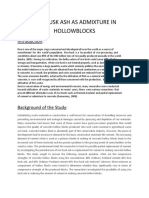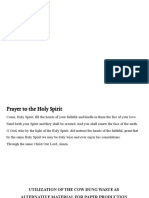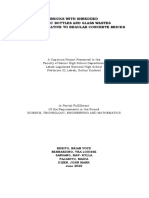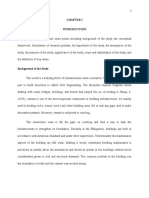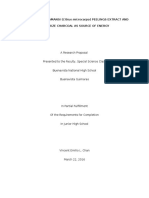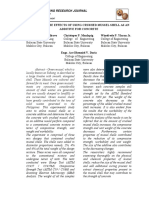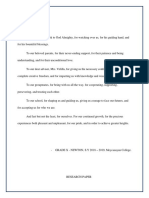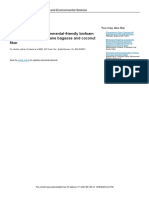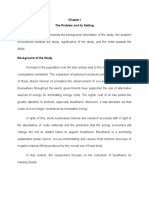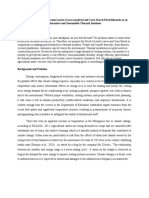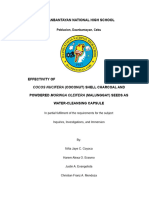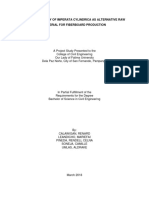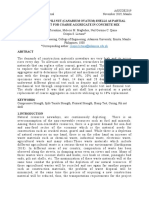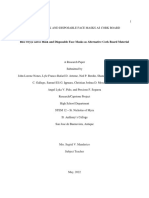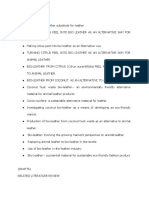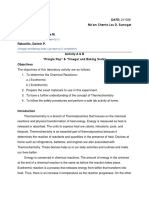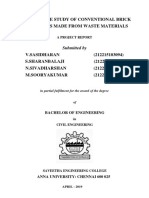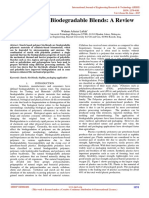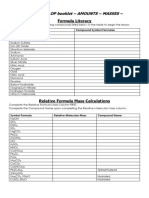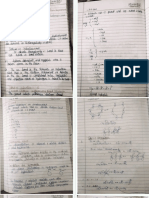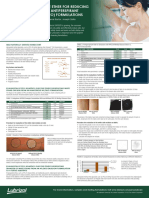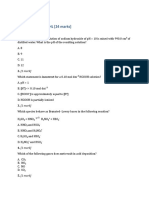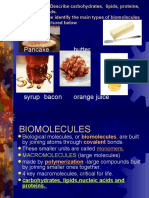0% found this document useful (0 votes)
2K views29 pagesSample Research
The document discusses a research study that compares the durability of bricks made from pulverized durian peelings and Portland cement. It begins with an introduction that provides background on solid waste management and the potential for utilizing durian peel waste. It then presents the conceptual framework, research problem, hypotheses, significance and scope of the study. The literature review discusses related work on waste management, brick production, durability of natural fibers like those in durian peel, and prior studies utilizing durian peel waste and analyzing its chemical components. The document outlines the research design, instruments, data collection and analysis that will be used to develop the bricks, test their performance, and compare their durability at increasing heights through free fall tests.
Uploaded by
Lia BonillaCopyright
© © All Rights Reserved
We take content rights seriously. If you suspect this is your content, claim it here.
Available Formats
Download as PDF, TXT or read online on Scribd
0% found this document useful (0 votes)
2K views29 pagesSample Research
The document discusses a research study that compares the durability of bricks made from pulverized durian peelings and Portland cement. It begins with an introduction that provides background on solid waste management and the potential for utilizing durian peel waste. It then presents the conceptual framework, research problem, hypotheses, significance and scope of the study. The literature review discusses related work on waste management, brick production, durability of natural fibers like those in durian peel, and prior studies utilizing durian peel waste and analyzing its chemical components. The document outlines the research design, instruments, data collection and analysis that will be used to develop the bricks, test their performance, and compare their durability at increasing heights through free fall tests.
Uploaded by
Lia BonillaCopyright
© © All Rights Reserved
We take content rights seriously. If you suspect this is your content, claim it here.
Available Formats
Download as PDF, TXT or read online on Scribd
/ 29



